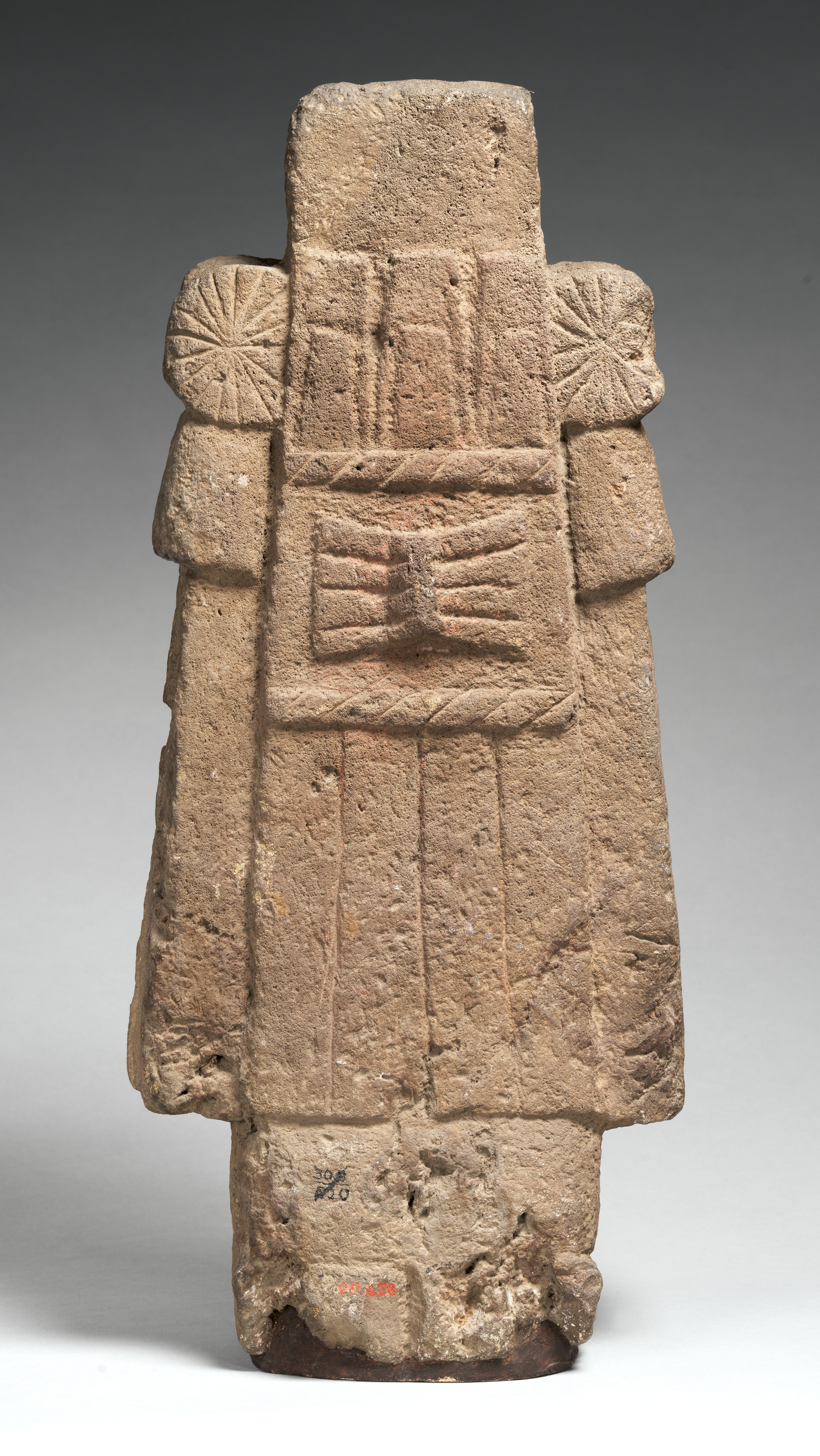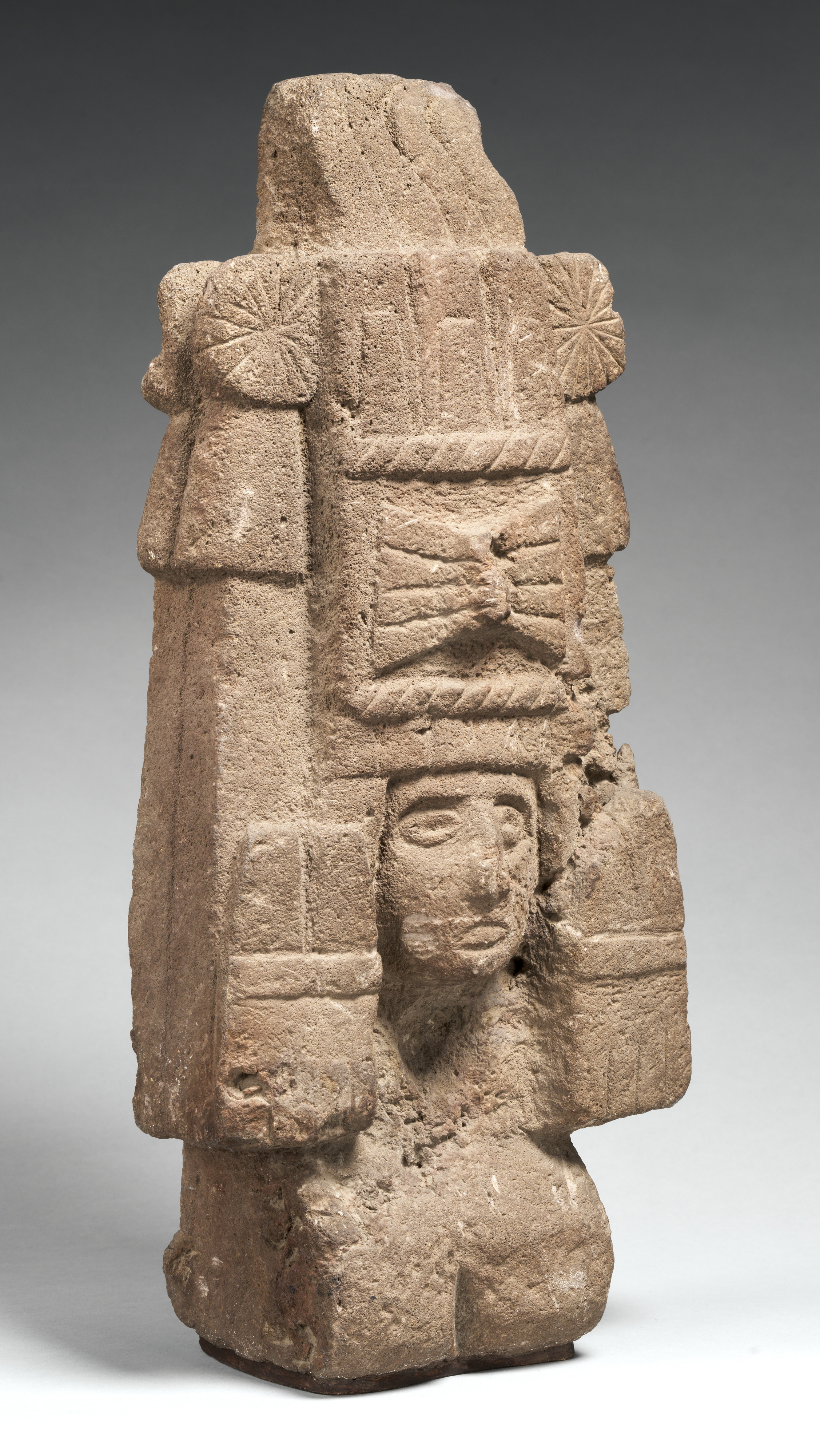Maize Deity (Chicomecoatl)
Not on view
Maize (corn) was the main food staple of the Mesoamerican diet and formed an important facet of native religious beliefs. Among the Aztecs, specific aspects of maize and its growth cycle were represented in the form of beautiful and potent deities, such as Cinteotl ("deified corn," a youthful god) and Xilonen ("fresh, tender corn," a virginal goddess). The sculpture seen here likely depicts the goddess Chicomecoatl ("7 Serpent"), the personification of mature, ripened corn.
Seated in a kneeling position with her feet turned inward beneath her, the deity holds a pair of corncobs in each hand and wears a towering headdress called a "paper house" (amacalli). Pinwheel-shaped rosettes decorate each of the upper corners, as a group of streamers descends down the figure’s sides and back. The central panel of the headdress features an ornamental device made of folded bark paper (amatl) and is framed, above and below, with twisted ropes. At top, bands of crenellated and flamboyant motifs define the upper limit of the figure’s tapered silhouette. All of these costume elements were common fixtures during the celebration of agricultural festivals, when priests and their enemy captives would dress as the gods, sing sacred songs, dance, and offer sacrifices in the hope of securing a bountiful harvest.
Here, the economical depiction of corn—identical, blunted, and positioned upright—underscores its symbolic aspect and reiterates the vertical thrust of the immense paper crown. The goddess, like the corn, is rendered somewhat generically as well. Her individual traits—a pair of coffee-bean eyes, thin lips, and modest nose—are almost completely subsumed by her elaborate, architectonic adornments. In this way, the goddess is conceptualized as an anonymous maternal force, an emblem of protective shelter, and the embodiment of agricultural fecundity.
Sculptures of maize goddesses vary from large-scale and highly detailed examples to simple, far more portable works. The comparatively large corpus of these figures—combined with their rather conventionalized form—suggests that they were produced in great numbers, perhaps as household idols for a widespread popular cult. This particular sculpture, with its solid, blocky body and monumental headdress, conveys a sense of heft and volume far greater than its actual physical dimensions and is a fine exemplar of a ubiquitous figure type (see also Aztec stone sculpture).
William T. Gassaway, 2014–15 Sylvan C. Coleman and Pamela Coleman Fellow
References and Further Reading
Nicholson, Henry B. "An Aztec Stone Image of a Fertility Goddess." Baessler Archiv 11, no. 1 (1963): 9–30.
Nicholson, Henry B., and Eloise Quiñones-Keber. The Art of Aztec Mexico: Treasures of Tenochtitlan. Catalogue of an Exhibition at the National Gallery of Art, Washington, 1983. Washington, D.C.: National Gallery of Art, 1983.
Pasztory, Esther. Aztec Art. Norman: University of Oklahoma Press, 1983.
Smith, Michael E. The Aztecs. 2nd ed. Malden, MA: Blackwell Publishing, 2003.
This image cannot be enlarged, viewed at full screen, or downloaded.
This artwork is meant to be viewed from right to left. Scroll left to view more.




